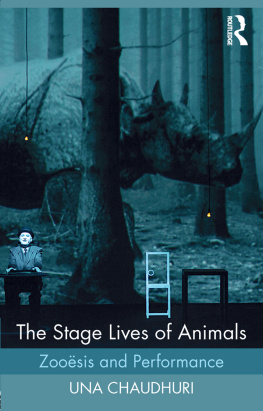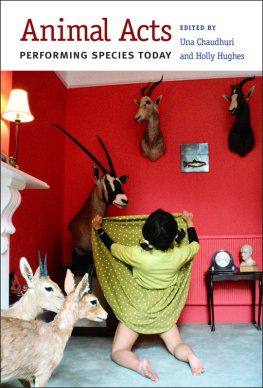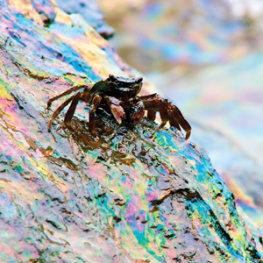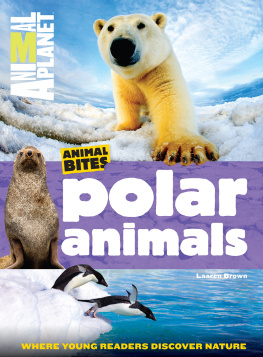
The Stage Lives of Animals
The Stage Lives of Animals shows what it means to make theater beyond the human. In this stunning collection of essays, Una Chaudhuri engages with the alternative modes of thinking, feeling, and making art that are offered by animals and animality, bringing insights from theater practice and theory to the emergent academic field of animal studies as well as exploring what animal studies can bring to the study of theater and performance.
As our planet goes through what scientists call the sixth extinction, and we become ever more aware of our relationships to other species, The Stage Lives of Animals traces a theatrical path toward understanding how other animals make us who we are. Chaudhuri offers a highly original perspective on the animal imagination of well-known plays, performances, and creative projects, including works by:
Caryl Churchill
Rachel Rosenthal
Marina Zurkow
Edward Albee
Tennesee Williams
Eugne Ionesco
Covering over a decade of explorations, a wide range of writers, and many urgent topics, this volume demonstrates that an interspecies imagination deeply structures modern western drama, theater, and performance.
Una Chaudhuri is a Professor of English, Drama, and Environmental Studies at New York University. She has lectured and published internationally on modern drama, performance theory, animal studies, and eco-criticism.
The Stage Lives of Animals
Zoosis and Performance
Una Chaudhuri

First published 2017
by Routledge
2 Park Square, Milton Park, Abingdon, Oxon OX14 4RN
and by Routledge
711 Third Avenue, New York, NY 10017
Routledge is an imprint of the Taylor & Francis Group, an informa business
2017 Una Chaudhuri
The right of Una Chaudhuri to be identified as author of this work has been asserted by her in accordance with sections 77 and 78 of the Copyright, Designs and Patents Act 1988.
All rights reserved. No part of this book may be reprinted or reproduced or utilised in any form or by any electronic, mechanical, or other means, now known or hereafter invented, including photocopying and recording, or in any information storage or retrieval system, without permission in writing from the publishers.
Trademark notice: Product or corporate names may be trademarks or registered trademarks, and are used only for identification and explanation without intent to infringe.
British Library Cataloguing-in-Publication Data
A catalogue record for this book is available from the British Library
Library of Congress Cataloging-in-Publication Data
Names: Chaudhuri, Una, 1951- author.
Title: The stage lives of animals : zoosis and performance / Una Chaudhuri.
Description: Milton Park, Abingdon, Oxon; New York: Routledge, 2016. | Includes bibliographical references and index.
Identifiers: LCCN 2016002710 | ISBN 9781138818453 (hardback) | ISBN 9781138818477 (pbk.) | ISBN 9781315745237 (ebook)
Subjects: LCSH: Animals in the performing arts. | Human-animal relationships in the performing arts. | Animal welfare.
Classification: LCC PN1590.A54 C47 2016 | DDC 791.8--dc23
LC record available at http://lccn.loc.gov/2016002710
ISBN: 978-1-138-81845-3 (hbk)
ISBN: 978-1-138-81847-7 (pbk)
ISBN: 978-1-315-74523-7 (ebk)
Typeset in Sabon
by Saxon Graphics Ltd, Derby
For Mike, cat whisperer and paragon of animals
Contents
Animalizing Interlude: Zopolis
UNA CHAUDHURI AND MARINA ZURKOW
Tracking the Stage Lives of Animals
The title of this book pays homage to one of a pair of works that have accompanied and inspired me in my fifteen years of journeying between the field of Animal Studies and the arts of Theater and Performance. J.M. Coetzees The Lives of Animals makes many appearances in the pages that follow, as does its unforgettable protagonist, Elizabeth Costello. An Australian novelist visiting a small American liberal arts college where she has been invited to give a lecture, conduct a seminar, and participate in a debate, Costello departs from convention by making her subject neither her writing nor herselfas is customary for novelists speaking in publicbut rather the lives, and often horrific deaths, of animals. Her presentations are further dismaying to her academic audience in that they use the lingua franca of the academyrational argumentationto expose its own woeful limitations, and for the apparent simplicityand hence apparent ill-placementof her thesis: open your heart.
I am not alone among women of my generation in feeling a sisterhood with Elizabethas we like to call her, marking both our affection for her as well as our willing suspension of disbelief in her fictionality. Elizabeths vulnerability and resilience, her commitment to voicing harsh truths while also registering the personal costs of doing so, have made her a hero to many of those, like me, whose feminist politics eventually led us beyond the realm of the social, to a concern for lives beyond the human: the lives of animals, of course, but also the lives of other species, and even the fate of inanimate but vital earthly forces, like the climate. Those concerns are increasingly shared by many people, from many political and theoretical backgrounds, and addressing them has included recognizing how important, how complicated, and how challenging it really is for usas individuals, groups, nations, and as a speciesto truly respond to Elizabeths injunction.
The essays in this book were written in the first decade and half of this new century, a century that began, for me and my fellow New Yorkers, with a trauma destined to launch not only countless analyses but also, as we now know, a new kind of endless conflict. In an article I wrote for the Village Voice a month after 9/11, I envisioned an expansive theatrical response to the catastrophe, indulging a utopianism that the scale of the event seemed to permit:
The theater I dream of would invite our playwrights to look beyond the American horizon. It would encourage them to bring their insights and compassion [] to the intersections between this culture and others, whether forced, or fortuitous, or fearsome. [] This would then also be, automatically, an ecological theater, contesting our leaders denials of the link between our lives and the deaths of species and ecosystems.
The title of that essay, The Birds are on Fire, now links it, in my mind, not with utopian artistic programs but with the escalating violence to humans and other species that characterizes our times. The firstand most brillianttheatrical treatment of this subject that I encountered was Caryl Churchills Far Away, the second of the works that has guided and inspired my thinking about animals in performance. Though the play is the explicit topic of only one chapter here, the complex challenge it poses to anthropocentric ideology, and the way it ruptures dramatic form to pose that challenge, has made it my primary theoretical sourceits brevity and fictionality notwithstanding. Not least of that plays values to me is that it contains the line (my favorite in all of world drama): The cats have come in on the side of the French (5). That such wild humor can erupt from a play of otherwise unrelieved desolation captures one of my abiding convictions about animals and animality: they are subjects that shift many of the established grounds of both artistic experience and knowledge productionaffective, stylistic, disciplinary, and institutional. They uncover surprising spaces for feeling and thinking anew and askew.











